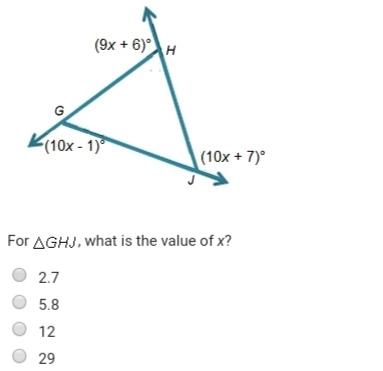The sum of two consecutive integers is 229. let x represent the first integer.
then x + 1 rep...

Mathematics, 27.11.2019 10:31 dukkchild666
The sum of two consecutive integers is 229. let x represent the first integer.
then x + 1 represents the second integer.
you can then write the equation:
x + (x + 1) = 229
what is the value of the second integer?

Answers: 3


Other questions on the subject: Mathematics


Mathematics, 21.06.2019 21:30, ojbank4411
Tom can paint the fence in 12 hours, but if he works together with a friend they can finish the job in 8 hours. how long would it take for his friend to paint this fence alone?
Answers: 1

Mathematics, 21.06.2019 21:30, stressedmolly8387
An annual marathon covers a route that has a distance of approximately 26 miles. winning times for this marathon are all over 2 hours. the following data are the minutes over 2 hours for the winning male runners over two periods of 20 years each. earlier period 14 12 15 22 13 10 19 13 9 14 20 18 16 20 23 12 18 17 6 13 recent period 7 11 7 14 8 9 11 14 8 7 9 8 7 9 9 9 9 8 10 8 (a) make a stem-and-leaf display for the minutes over 2 hours of the winning times for the earlier period. use two lines per stem. (use the tens digit as the stem and the ones digit as the leaf. enter none in any unused answer blanks. for more details, view how to split a stem.) minutes beyond 2 hours earlier period 0 1 2 (b) make a stem-and-leaf display for the minutes over 2 hours of the winning times for the recent period. use two lines per stem. (use the tens digit as the stem and the ones digit as the leaf. enter none in any unused answer blanks.) minutes beyond 2 hours recent period (c) compare the two distributions. how many times under 15 minutes are in each distribution
Answers: 2

Mathematics, 21.06.2019 22:00, juhavyen
Determine the domain and range of the given function. the domain is all real numbers all real numbers greater than or equal to –2{x: x = –2, –1, 0, 1, 2}{y: y = –2, –1, 0, 1, 2}. the range is all real numbers all real numbers greater than or equal to –2{x: x = –2, –1, 0, 1, 2}{y: y = –2, –1, 0, 1, 2}.
Answers: 1
You know the right answer?
Questions in other subjects:


Mathematics, 19.11.2020 19:10




Mathematics, 19.11.2020 19:10

History, 19.11.2020 19:10






